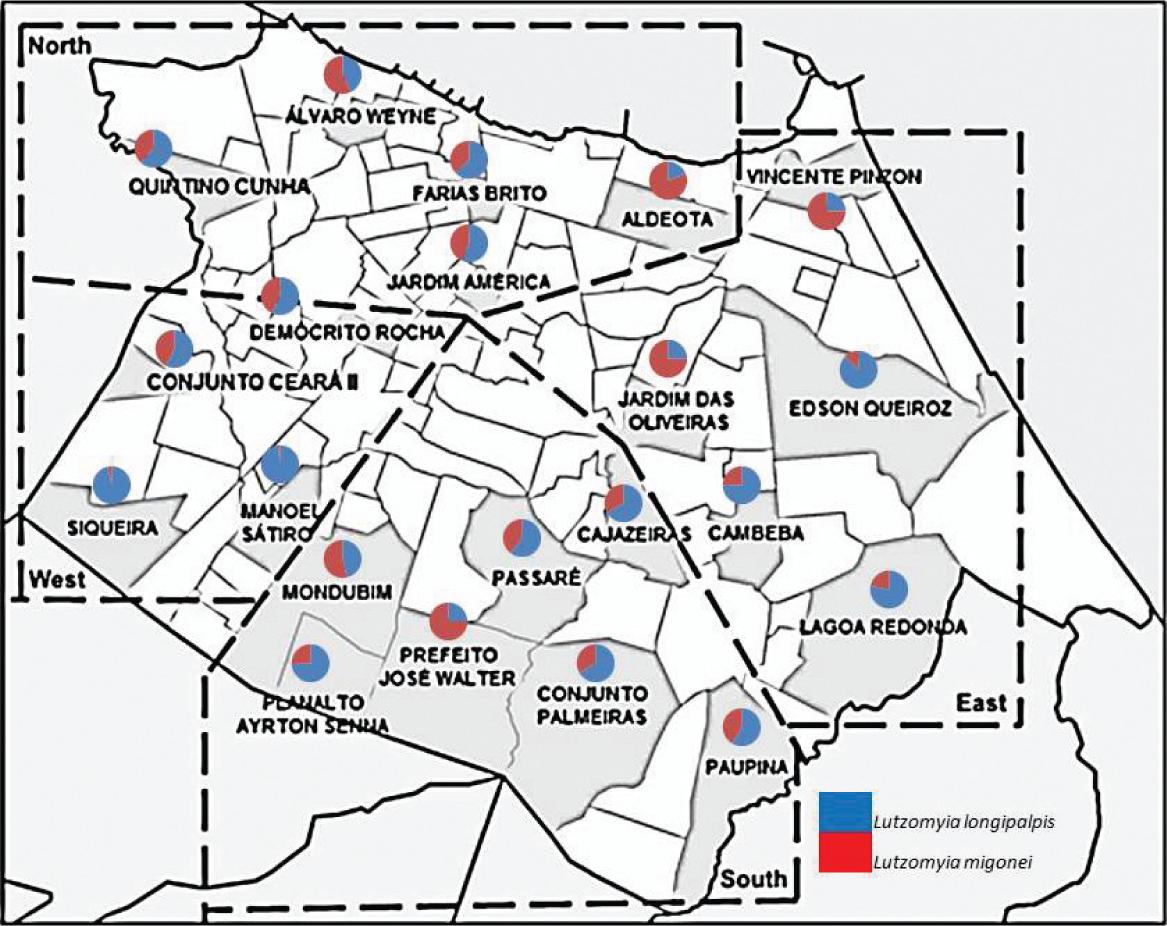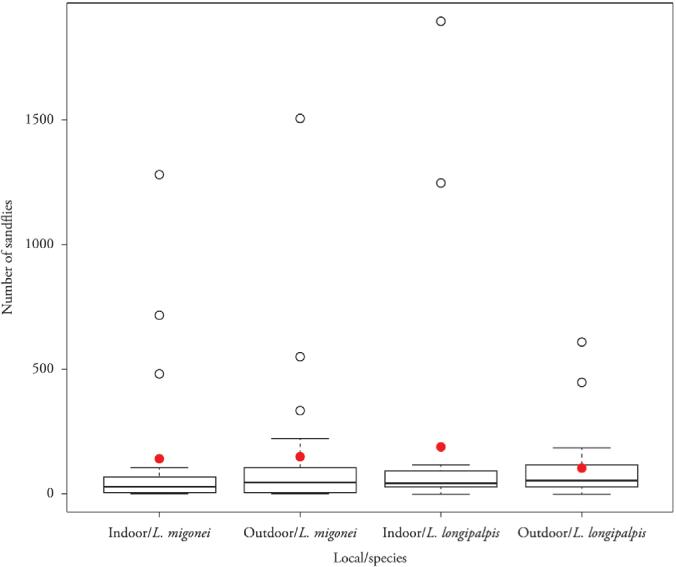The main vector for visceral leishmaniasis (VL) in Brazil is Lutzomyia longipalpis. However, the absence of L. longipalpis in a region of autochthonous VL demonstrates the participation of other species in the transmission of the parasite. Studies conducted in La Banda, Argentina, and São Vicente Férrer, Pernambuco State, Brazil, have correlated the absence of L. longipalpisand the presence of L. migonei with autochthonous cases of VL. In São Vicente Férrer, Pernambuco, there was evidence for the natural infection of L. migonei with Leishmania infantum chagasi. Thus, the objective of this work was to assess the ecology of the sand flies L. longipalpis and L. migonei in Fortaleza, an endemic area for VL. Insect capture was conducted at 22 sampling points distributed across four regions of Fortaleza. In total, 32,403 sand flies were captured; of these, 18,166 (56%) were identified as L. longipalpis and 14,237 (44%) as L. migonei. There were significant density differences found between the vectors at each sampling site (indoors and outdoors) (p <0.0001). These findings confirm that L. migonei and L. longipalpis are distributed throughout Fortaleza, where they have adapted to an indoor environment, and suggest that L. migonei may share the role as a vector with L. longipalpis in the transmission of VL in Fortaleza.
Lutzomyia longipalpis ; Lutzomyia migonei ; visceral leishmaniasis; Fortaleza


